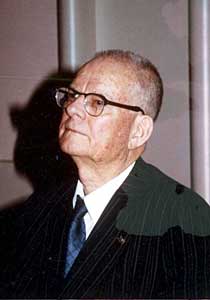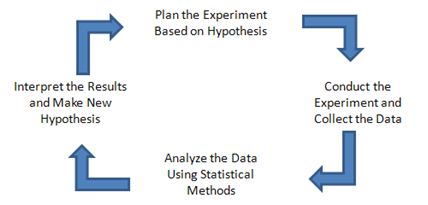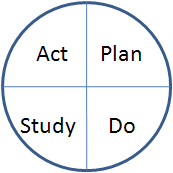December 2006
In this issue
This is the third in a special four-part series on the teachings of Dr. W. Edwards Deming. Dr. Deming spent years developing a theory for helping companies move forward into the twenty-first century. And it all still applies today.
Understanding Dr. Deming begins with understanding his “system of profound knowledge.” This system is composed of four bodies of knowledge:
- Knowledge of a system
- Knowledge of variation
- Theory of knowledge
- Knowledge of psychology
To understand the system of profound knowledge, you must understand what a system is and what the “aim” of a system is. You must also understand variation and realize that the true benefit of this understanding comes in how you lead people. You must understand the theory of knowledge, and finally you must understand motivation and psychology. You must know something about each area because they are interrelated.
Part 1 of this series covered the first part of profound knowledge: knowledge of a system. Part 2 examined variation. Both parts are on our website. This third part covers the theory of knowledge. You can learn more about Dr. Deming by visiting deming.org.
Knowledge Comes from Theory

Often, we make process improvements as if the process were a black box. Simple trial and error. Are we really learning anything about the process? Many would say yes, but we are really only gathering information about the process, not knowledge.
Dr. Deming said: “Knowledge comes from theory.” To learn, one must have a theory. Without theory, we cannot make predictions about what might happen. Theory is a prerequisite for learning.
(Note: permission to use the Media Gallery photo of Dr. Deming granted by Diana Deming Cahill of the W. Edwards Deming Institute.)
Examples
Consider a distributor. One reason items are picked incorrectly in the warehouse is the time of day orders are printed in the warehouse. Typically, a large number of orders are printed late in the morning for afternoon delivery. The pickers are rushed to pick the items so they can be packaged and readied for delivery. The theory is that most items are picked incorrectly during this time frame. We could collect data to determine if this true. If it is, the theory is correct for the time being. If it is not true, the theory is incorrect and needs revision, but we have learned something because we had a theory with which to start.
A steel mill has been working on improving on-time delivery. The original approach was for each department to move tubes through as quickly as possible. Those that were late were given special attention (red tags). The end result? On-time delivery did not improve. One reason for this is there was no theory for on-time delivery. The theory now involves identifying the bottleneck in the mill and scheduling the mill to run only at the bottleneck’s capacity. If this theory is correct, on-time delivery should improve. Removing this bottleneck will improve on-time delivery, but the theory is that there will always be a bottleneck in production and the mill can deliver no more than its bottleneck.
Prediction

A major reason for having theory is prediction. A process that is in statistical control can be predicted to operate at the same level and dispersion for the near future. A plant can be predicted to have an on- time delivery that is no better than its bottleneck. A distributor can expect more items picked correctly at certain times because of when orders are printed in the warehouse.
Dr. Deming says “the theory of knowledge teaches us that a statement, if it conveys knowledge, predicts future outcomes, with risk of being wrong, and that it fits without failure observations of the past.” A key point to emphasize is that information is not knowledge. Knowing the number of tons produced yesterday by the mill is simply information. Without theory, there is no way to effectively use the information.
Experimentation, for example, starts out with a theory or a hypothesis. This theory is then tested to see if it correct. The data are analyzed and interpreted. Based on the results, the theory is confirmed or a new theory is developed. These steps are shown in the figure above.
The PDSA Cycle

The four steps in the cycle are:
Plan: Plan a change in a process aimed at continuous improvement.
Do: Carry out the change.
Study: Study the results to determine if the change improved the process, i.e., determine what we learned.
Act: If appropriate, adopt the change, suggest another change or abandon the cycle.
In this cycle, it is important we start with a theory about why a change will work. If we do not have a theory, we will not be able to understand why the change worked or did not work. Yes, we may have to change our theory based on the results, but we will have learned something and will be able to include it in our theory.
To help with developing and testing theories, management must use problem-solving skills as well as teach them to its employees. These skills include the use of Pareto diagrams, fishbone diagrams, scatter diagrams, control charts, histograms, brainstorming, consensus decision-making, experimental design, affinity diagrams, failure mode and effects analysis, etc.
Management must also teach theory of processes to all employees. Employees cannot do a job properly if they don’t understand why they do it. This, of course, includes their role in optimizing the system, but also in operating processes. For example, consider the reversible reaction between a metal, such as silver, and an acid to produce the salt of the acid and water.
Ag + Acid — Salt + H2O
Employees involved in a process must understand this reaction and what factors influence it. For example, increasing reaction temperature will normally drive this reaction towards the production of the salt and water. If we want the salt as the final product, we must determine what temperature is required and how to remove the water to prevent the reverse action. Far too often, operators do not understand the importance of controlling certain factors. In addition, if they do not know the reason and importance of water removal in this reaction, how can they make suggestions to improve this procedure?
Summary
The Theory of Knowledge describes a system for learning, and the importance and use of theory to promote learning. Dr. Deming recommended using the Plan-Do-Study-Act (PDSA) cycle as a model for achieving this goal.
It is not the easiest part of the system of profound knowledge to understand. Many of us fail to predict what we think will happen (and why) when we experiment. Without this prediction, we fail to learn as much as we could.
Dr. Deming said that management is prediction. When you understand this, you will understand the impact of the other three parts of profound knowledge. When you explore the basis for the prediction you are making, you realize you must understand the theory that you are using to make the prediction. For example, it is commonly thought that sales commissions drive sales people to sell more. What is the theory behind this? How can you test it? The results might surprise you.
So, develop a theory that allows you to predict what will happen. And then use the PDSA cycle to see if your prediction is true. If not, you will need to change your theory. But at least you have learned something.
Next month, we will look at Part 4 of Dr. Deming’s system of profound knowledge: psychology.
Have a Happy New Year!